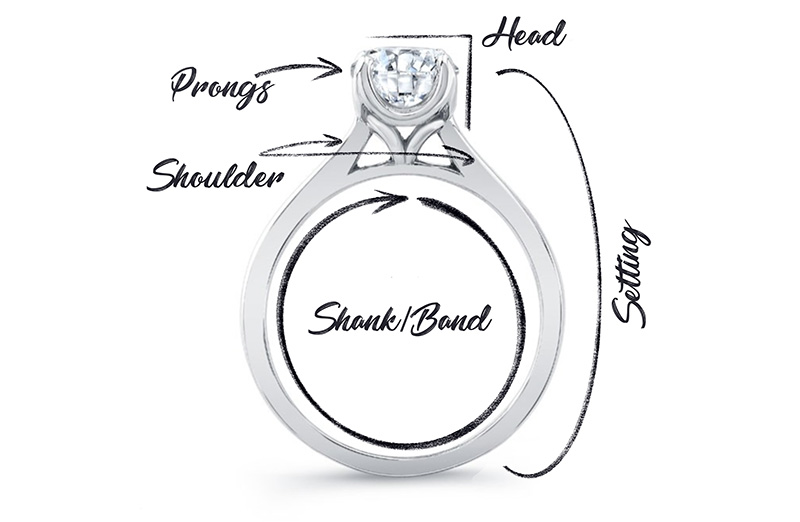5 Basic terms that everyone needs to know when ring shopping
Ready to pop the question but can’t make heads or tails when faced with all the different engagement ring options?
Engagement rings don’t come cheap, so when it comes to shopping before popping, you need to be aware of what you’re dealing with. Some basic knowledge is of the essence at least, if only for the purpose of avoiding the blank stare when the jeweler (or worse – your fiance) is talking about where you will be spending this hefty portion of your savings.
There are many different features to consider and, while it’s important to know exactly what you want, it’s equally necessary to be able to express it.
Here are 5 keywords for your Ring Anatomy 101!
1) The Setting
The setting is basically the body of the ring. A setting can be in white gold, yellow gold, rose gold, and even platinum. Some settings are covered in diamonds, others follow a more modern line, but this is basically what holds the entire ring design in place.
2) Prong
Prongs are the thin pieces of metal that bend to attach and secure the stone. In a prong setting, the center stone is held in a vice-like grip of elegant but strong metallic claws ensure the safekeeping of the gem. Moreover, prong settings expose the girdle which in turn allows for the maximum amount of light to enter a stone from all angles, making it sparkle!
3) Head
The head is the top portions of an engagement ring, that holds the center stone in place. There are many varieties and it is important to pick the one that is right for you.
4) Shoulder
The shoulder marks the point between the shank (see below) of the ring and the setting that holds the center stone.
5) Shank / Band
The shank, also known as the band, is the bottom metal portion of the ring that wraps around the finger, starting and stopping at the head.


